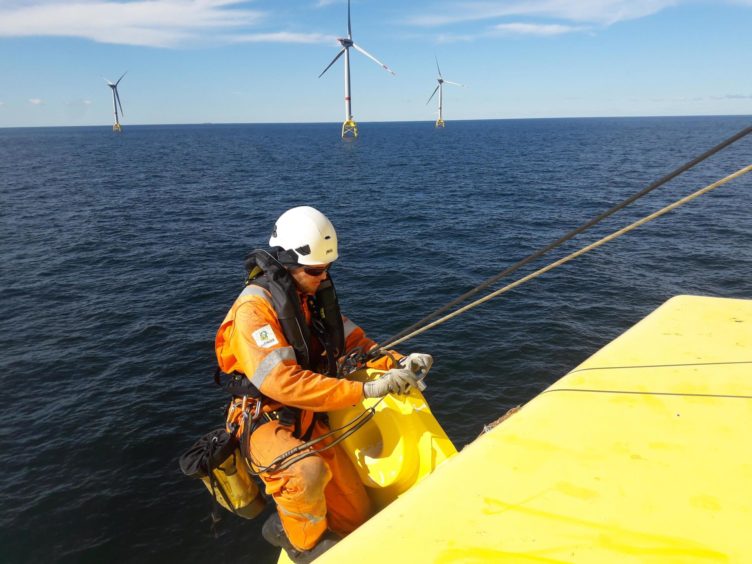
A 9 billion-euro ($9 billion) offshore wind power hub planned in the Baltic will mark a significant step in the process of weaning Europe off its reliance on Russian gas, according to the German and Danish governments.
The so-called Bornholm Energy Island in the Baltic Sea will link several wind parks and distribute the energy they produce between the two countries. The project will generate more than 3 gigawatts, enough power for 4.1 million households, after it begins operation in 2030.
“It’s the first time in Europe that two countries cooperate on such a project,” German Energy Minister Robert Habeck said in a phone interview with Bloomberg on Sunday.
The project will need 3 billion euros of investment for the infrastructure and 6 billion euros to build the offshore wind park, according to the Danish government.
The German network provider 50Hertz and its Danish counterpart Energinet, which will build the energy hub and the connection to the mainland, will share both the costs and profits of the project.
“We will make sure that this will also be a lucrative deal for tax payers,” the Danish Energy Minister Dan Joergensen said. “You need a lot of trust and willingness between two countries to be able to shoulder a project of this magnitude.”
After it’s up and running, other Baltic states and Poland will have the chance to join the project.
Both Germany and Denmark have agreed, however, that any new partner will need the approval of both sides. Germany especially is concerned about the impact any rerouting of the energy flow could have on electricity supply.
The “energy island” will run close to the big pipelines channeling Russian gas into Europe, said Habeck, who is also Germany’s deputy chancellor. “But now it will be our own energy and no longer Russian gas,” he said.
The European Commission aims to increase Europe’s offshore wind capacity from its current level of 12 gigawatts to 300 gigawatts by 2050.
